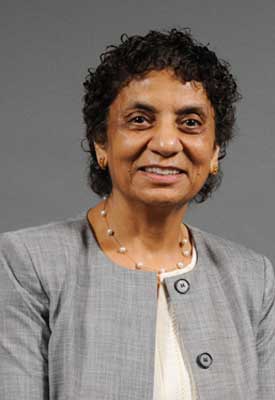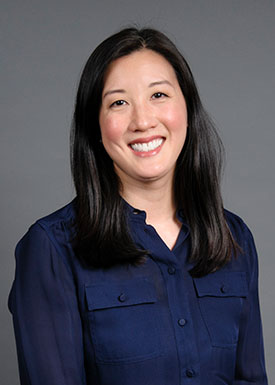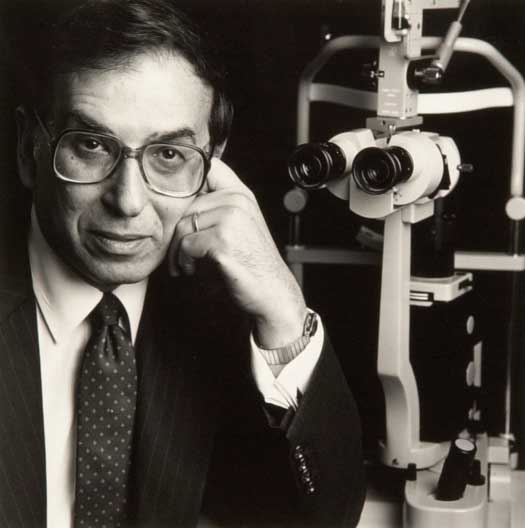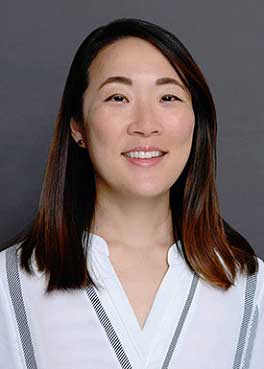Dear Alumni, Faculty, and Friends,
We hope you enjoy this edition of the NEEC newsletter! In this issue, we look back at the beginning of the Tufts Ophthalmology Department with a profile of Bernard Schwartz, the founding Chairman of Tufts Ophthalmology. We also celebrate the accomplishments of several of our talented women faculty members: Dr. Caroline Baumal was selected to the Ophthalmology Power List, Dr. Sylvia Yoo has published a new text book on Pediatric Ophthalmic Surgery with contributions from four other female faculty members, Dr. Vicki Chen has opened the Chen Laboratory for Epidermolysis Bullosa Research, and Noorjahan Panjwani will be retiring from the Director of Vision Research after nearly two decades at the helm. Lastly, we include the save-the-date for our alumni reception at the AAO in November, 2021.
We would love to hear from our alumni with any of your own updates or suggestions for future newsletter features. Please keep in touch at [email protected].
– Astrid Werner, Laurel Vuong, and Vicki Chen
Note from the Chairman:

Hello from Boston. As I write this, Red Sox opening day, the blue sky and budding trees all are sure signs that the renewal of Spring is upon us. And, as more and more of us get vaccinated, the promise of a return to normalcy is close at hand.
This issue of our Alumni newsletter highlights the incredible faculty we have at the New England Eye Center. While nationally, ophthalmology remains a male-dominated field, at Tufts our faculty is 2/3rds female, and as this newsletter attests they are leaders in our field.
We hope to see you all at our Annual Alumni cocktail party at the AAO in New Orleans this November. Click here to see our save-the-date.
-Jay Duker, MD
Chairman of Ophthalmology at the Tufts Medical Center
Caroline Baumal, MD named one of the most influential female figures in Ophthalmology

Dr. Caroline Baumal selected to Ophthalmology’s 2021 Power List
Dr. Caroline Baumal, a member of NEEC’s Retina Department, is a dedicated surgeon, researcher and educator who has made significant contributions to the field of vitreoretinal disease. In recognition of her impact, Dr. Baumal has been included in the 2021 Power List of the most influential female figures in Ophthalmology. You can see the full list, and read Dr. Baumal’s interview here.

Dr. Panjawani Set to Step Down as Director of Vision Research

“Noorjahan Panjawani, PhD has been a pillar of the research community at the New England Eye Center and Tufts Medical Center, and has led Vision Research Center at NEEC for nearly twenty years”, says Jay Duker, MD. “Her research into the pathologic mechanisms of the cornea and anterior segment has led to therapeutic developments that have directly helped thousands of patients. Her steadfast leadership has guided our basic research efforts and her mentorship has resulted in many young investigators being independently funded. Founded by previous director Elizabeth Fini, PhD, the Tufts Center of Vision Research (TCVR) is a multidisciplinary, virtual entity that connects vision researchers across all Tufts Institutions. Dr. Panjawani will continue her research endeavors for several more years and will stay in her current role until a successor is appointed.” You can read more about Dr. Panjwani’s career and accomplishments here.
NEEC Research Spotlight

Vicki M. Chen, MD, recently opened the Chen Lab on Tupper 2 in July 2020. She is focused on bringing forth effective treatments for a painful and blinding condition known as epidermolysis bullosa or EB. This terrible disease is known as “the worst disease you’ve never heard of” with good reason – it causes blistering throughout the skin, eyes, and internal organs. This rare genetic disease has no specific treatments or cure.
The Chen Lab aims to decrease pain and vision loss by translating promising drugs into topical ophthalmic treatments for EB. Her current grant provides funding to investigate the effectiveness of recombinant human protein therapy on the ocular surface, and explore methods for transporting a large protein through intact epithelium. With tremendous support from the Department of Ophthalmology Chair Dr. Jay Duker, Director of Research Dr. Noorjahan Panjwani, Dr. Zhiyi Cao, Dr. Rajendra Kumar-Singh, Dr. Elizabeth Fini, and Dr. Pedram Hamrah, she is learning first-hand, what it takes to become a clinician-scientist. Her work is generously funded by multiple foundations including the Epidermolysis Bullosa Research Partnership, the Epidermolysis Bullosa Research Medical Foundation, the Children’s Glaucoma Foundation, the Massachusetts Lions Eye Research Fund, the Nevins Fund and Research to Prevent Blindness.
Dr. Chen serves as Director of Pediatric Ophthalmology & Strabismus at the Floating Hospital for Children and the New England Eye Center, at Tufts Medical Center. She joined the Department of Ophthalmology at TMC in the fall of 2008 after completing her fellowship in Pediatric Ophthalmology at Children’s Hospital Boston. She also serves as the Consulting Ophthalmologist for the EB Multidisciplinary Team, led by Dr. Karen Wiss at University of Massachusetts, Worcester, MA.
Her research is inspired by an infant who presented one night, as an emergency patient, with severe pain and blistering of his eyes. While treating him, she learned that standard therapies do not effectively decrease pain, reduce scarring, or prevent vision loss. When she learned that a local pharmaceutical company was developing a protein therapy for EB, she excitedly contacted them, but learned that there were no plans to make a formulation for the eyes. Rather than waiting for pharma to realize the need, she imported mice (with EB) to produce her own colony at Tufts University School of Medicine, and began the lengthy process of developing a safe and effective eye treatment.
Dr. Chen has gained an international reputation in the field of EB. She has published several papers that approach the challenge of drug development from multiple angles. Her recently published international EB eye survey demonstrated that EB children frequently experience severe eye pain and vision loss, and much more needs to be done to address eye problems. Additional publications include morphology of the EB mouse cornea, use of extended-wear contact lenses to reduce pain in EB children, and anterior-segment optical coherence tomography in patients with EB. She was invited to speak at the national 2018 Dystrophic EB Research Association Biennial Care Conference (DEBRA-DCC) and the inaugural 2020 EB World Congress, on the topics of ophthalmic care and EB eye disease.
Years later, she continues to care for her first EB patient, who is now 12 years old (and still sees 20/20). She looks forward to a time when she can tell her patients that we DO have safe and effective therapies for EB that will decrease pain and prevent vision loss.
From the Archives at NEEC

Profile of Bernard Schwartz, M.D., Ph.D. (1927-2007): Founding Chair of Ophthalmology, Tufts University School of Medicine
Bernard Schwartz was the first fulltime professor and Chairman of Ophthalmology at Tufts University and The New England Medical Center. Dr. Schwartz was born in Toronto in 1927, and he attended of the University of Toronto where he received his Medical Degree in 1951. He then went on to complete his Ophthalmology Residency at the University of Iowa in 1955. It was there that he came under the influence of European trained physicians Hermann M. Burian and Frederick Blodi. Believing that, “The clinical sciences can only progress if they maintain a strong relationship with the basic sciences”, he decided to pursue a Ph.D. in physiology under the mentorship of Placidus J. Leinfelder, with whom he published several works on lens and corneal metabolism. Dr. Schwartz also cites Drs. Boyd in Pathology, Best in Physiology, Grant in Anatomy and Hamm in Physiology as major influences in the basic sciences. He advocated the British tutorial style of teaching during in his career.
In 1960, Dr. Schwartz became Assistant Professor at the State University of New York, Down-state, where he continued to work on lens physiology. During that time, he published 18 papers on various topics including alpha-chymotrypsin techniques of lens culture. In addition, he published one of the first papers describing the association of increased intraocular pressure and steroid use in 1962. He remained in New York until 1968 when Claes Dohlman was asked by Tufts University School of Medicine and the New England Medical Center to recruit the first full-time Professor and Chairman of Ophthalmology. Dr. Dohlman had met Dr. Schwartz in Iowa and was convinced that he would be the best person for the job.
When Dr. Schwartz arrived at Tufts in 1968, there had been several part-time chairs of ophthalmology, but many of these individuals had appointments at Boston City Hospital, later to be affiliated with Boston University, and the Massachusetts Eye & Ear Infirmary, affiliated with Harvard University. These and other ophthalmologists saw patients at the Boston Dispensary which was founded in 1796 as the first institution in the United States to provide medical care for the poor. When Dr. Schwartz arrived, the eye department was primarily located in what became the Boston Dispensary Building, built in 1883. Dr. Schwartz was soon joined by Jules Baum, who soon developed an international reputation as a cornea and infectious disease expert. Meanwhile, Dr. Schwartz continued his research in lens metabolism and glaucoma.

Within a year of his arrival in Boston, Dr. Schwartz and Ephram Friedman of Boston University created a joint residency program based in the Boston Veteran’s Hospital. In 1970, the Tufts Ophthalmology Residency Program became an independent program and continued to use the Boston Veteran’s Hospital and New England Medical Center as primary teaching facilities.
As Director of the Tufts Ophthalmology Residency Program, Dr. Schwartz continued to impart his scholarly ideals. One of these was the concept that “sick eyes exist in sick bodies”. He also insisted on “examining the whole patient in a lighted room rather than concentrating on the eye in a dark room”. He maintained close relationships with other medical and surgical disciplines within the hospital. In those days, every consultation note was typed and inserted directly into the patient’s record along with appropriate references dealing with the ophthalmic manifestation of the patient’s systemic disease. Dr. Schwartz continued to encourage his students to integrate the basic sciences into clinical activities. This included the field of epidemiology, which he ultimately developed into a joint program with the Harvard School of Public Health. Some graduates of this program went on to gain international recognition in ophthalmic epidemiology. Over the 32 years Dr. Schwartz was Chairman, he trained over 80 residents and more than 90 fellows. Many of his fellows in glaucoma came from all over the globe and have continued to have successful careers, many as full-time academicians.
While developing the teaching program at Tufts, Dr. Schwartz continued his research in epidemiology. He was the first to recognize a relationship between decreased life expectancy and cataract development. He continued to study the effects of steroids on the process of glaucoma. He remained quite interested in the hypothalamic/adrenal axis and its relationship to glaucoma, as well as the effects of melatonin on the eye. Dr. Schwartz strove to maintain a quantitative, rather than a qualitative, approach to clinical science. He designed various ways to measure blood flow to the optic nerve, primarily using fundus fluorescein angiography, and one of his major efforts was in the quantitative measurement of the optic disks. Along with Takenore Takamoto, he utilized photogrammetry to evaluate optic disk cupping. He was also one of the first to recognize that glaucomatous optic nerve head damage could occur in patients with normal intraocular pressures.
Dr. Schwartz was active in several organizations, especially internationally. He was an active consultant and a member of The Study Section of the National Institutes of Health. He served on several committees for the Association of University Professors in Ophthalmology, the National Society for the Prevention of Blindness, and the International Perimetric Society. He always attended the annual meetings of the American Academy of Ophthalmology and the Association for Research in Vision and Ophthalmology where he founded the glaucoma section.
Perhaps one of Dr. Schwartz’s most important legacies is The Survey of Ophthalmology. In 1968, he took on the editorship of a journal which, though founded in 1956, had been a minor publication. Under his leadership, “The Survey” soon epitomized many of the things Dr. Schwartz represented personally. He always maintained high standards of objectivity and ethical conduct for peer-reviewed articles which he personally edited in detail. He always encouraged submission of articles which integrated ophthalmology with the rest of medicine. He insisted that the articles were scientific, especially if they emphasized a quantitative rather than a qualitative approach to medical science. He encouraged submission of articles on the history of ophthalmology and medicine. He was always happy to see manuscripts dealing with the epidemiology of ophthalmology and medicine. The Survey of Ophthalmology became a great teaching tool for residents and medical students alike. One colleague recently said that “Bernie was surely one of the best editors ever.”
Bernard Schwartz will be remembered as the first full-time Chairman of Ophthalmology at Tufts University School of Medicine. He was able to establish and develop what has become one of the top residencies in the country. His dedication to scholarship in ophthalmology will also remain as a major part of his legacy. He will be missed by those of us who trained and worked within his department, those who have been active in academic ophthalmology and many practicing ophthalmologists throughout the world.
Thomas R. Hedges III, M.D.
Reference: Bernard Schwartz. Ophthalmology at Tufts 1968-1990, More Than Two Decades of Unification and Progress
Sylvia Yoo, MD publishes new textbook, Pediatric Ophthalmology Surgery and Procedures: Tricks of the Trade
Sylvia Yoo, MD and other expert contributors from NEEC cover the full range of pediatric ophthalmic procedures in a new step-by-step guide to pediatric ophthalmic surgery


Organized into six sections and 19 chapters, Dr. Yoo’s text encompasses ophthalmic surgical approaches that pediatric ophthalmologists are likely to perform. Disease-related sections cover strabismus, eye conditions impacting the orbit and anterior segment, glaucoma, and retinopathy of prematurity. Contributing authors Sylvia Yoo, MD, Catherine Choi, MD, Shilpa Desai, MD, Michelle Liang, MD and Alison Callahan, MD are all faculty members of the New England Eye Center. You can purchase your copy here!
Donate to the Ophthalmology Teaching Fund!
The Ophthalmology training program at NEEC is exceptional because we support our residents every step of the way. We embrace the challenge of improving education, but many initiatives require funding. Your help is vital in maintaining and elevating the strong reputation of NEEC Alumni. Please click here to support out trainees by donating to our Ophthalmology Teaching Fund.
Join us for the NEEC Alumni Reception at AAO in New Orleans!
Sunday, November 14, 2021
6:30PM – 9:30PM
The Ritz-Carlton, New Orleans, Acadia Room
Thank you to our contributing editors:
Thomas Hedges, MD – From the Archives at NEEC
Andre Witkin, MD – Research Spotlight
Sylvia Yoo, MD – Departmental Spotlight
Melina Morkin, MD – Special Features
Vicki Chen, MD – Ophthalmology Teaching Fund Column
Astrid Werner, MD – Editor
Laurel Vuong, MD – Editor
